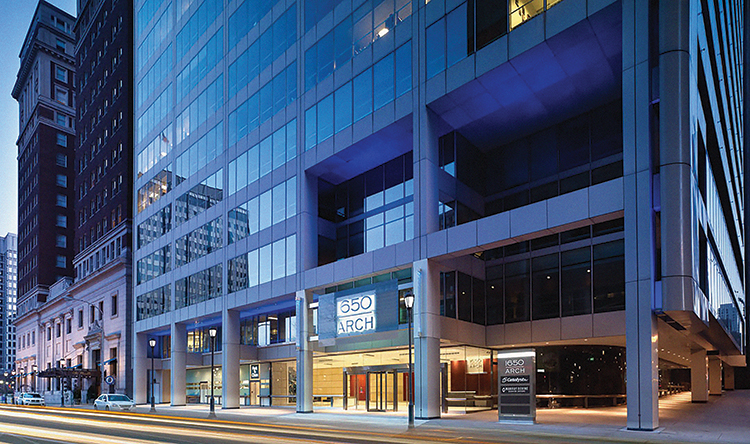 story by ariela roseThe Children’s Hospital of Philadelphia (CHOP) is no stranger to innovation. Consider it’s new EcoCHOP initiative, which aims to implement responsible practices—from recycling, building and purchasing, to more healthcare-specific areas—that ultimately care for the health of the environment.
story by ariela roseThe Children’s Hospital of Philadelphia (CHOP) is no stranger to innovation. Consider it’s new EcoCHOP initiative, which aims to implement responsible practices—from recycling, building and purchasing, to more healthcare-specific areas—that ultimately care for the health of the environment.
“The healthcare industry is among the most wasteful on earth,” explains Tyler Weaver, who heads the EcoCHOP program. “It’s our duty to change how waste is perceived, from being a costly burden to an opportunity and a commodity. The majority of waste generated is able to be reused or recycled in some way, so we’d rather work towards that and take responsibility for our environment, being that we’re a healthcare facility.”
One way that EcoCHOP hopes to reduce healthcare waste is through educating employees on the proper disposal of “red-bag”—or biohazard—waste. This is done via “red-bag audits,” hands-on training during which red-bag waste is sorted in front of employees to show which of its contents are trash, and which could actually have been recycled. According to Weaver, techniques like this have led to a 70 percent reduction in regulated medical waste, and a hospital-wide recycling rate of 49 percent.
“I want recycling to be an enjoyable part of everyone’s life and something that transfers to future generations,” says Weaver, an ardent anti-waste advocate (and author of the GRID column “Tyler Talks Trash”). “It’s the best feeling when employees tell you about a new recycling initiative they’re trying at home with their kids, or how they would have trashed something but then found another use for it.”
Along with statistical successes, EcoCHOP has also led to the construction of the Colket Translational Research Building (CTRB), a LEED-certified laboratory that is an impressive display of the hospital’s commitment to environmental stewardship. The building was designed by local architecture firm Ballinger, which worked to seamlessly integrate the building’s green elements.
“Designing the most energy-efficient building feasible was the single most significant green building goal for the CTRB,” explains Zoe Sanderson, marketing director at Ballinger. “Research buildings and hospitals, by their nature, require substantial energy resources to operate.”
To maximize energy efficiency, Ballinger incorporated design strategies such as separate air-handling systems for the office areas and research lab, an important element given that medical research labs cannot re-circulate air and must utilize a system that constantly refreshes air brought into the research area. Other elements include daylight sensors, and a system for maintaining a constant interior temperature created through the use of low-emissivity materials. Each of these pieces are representative of CHOP’s commitment to reducing its impact on the environment that its patients interact with outside the hospital’s walls.
“CHOP employees can feel good about the fact that they work at an institution that is actually trying, and succeeding, to make a difference,” says Weaver. “My goal is to have our employees and patients take the behaviors they learn here and apply them to their lives at home.”





very nice
very nice